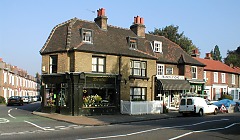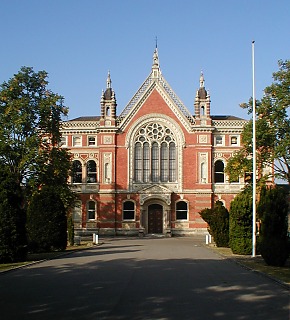|
|
 |
|
Southwark
|
 |
|
A collegiate village situated five miles south of the City of London, hemmed in by more prosaic neighbours that have traded
on its prestige. First recorded as Dilwihs in a charter signed by Edgar the Peaceful in 967AD, the name derives from the Old
English words ‘dile wisc’, meaning ‘dill meadow’. Despite its close historical links with Camberwell,
to the north-west, Dulwich has remained distinct and has long been more exclusive. This is almost entirely due to the role
of Dulwich College, founded in 1619 by the actor Edward Alleyn as the College of God’s Gift, which consisted of almshouses
and a school for under-privileged boys. From the early 18th century, and especially after the mid-1760s, the college allowed
wealthy Londoners – often the parents of pupils – to build substantial houses that would maintain their value,
and that of the estate. A number of these remain, and only a few have been converted to flats or for other purposes. On Gallery
Road, Belair is a well-proportioned villa built in 1765 for a Whitechapel corn merchant, and now housing a restaurant. Its
grounds are open to the public. The college subsequently permitted more homes to be built, of a progressively more affordable
character, but nevertheless kept the numbers down and the standards up. Villas and lodges also fringed the north side of the
common, which was enclosed in 1805. Sir John Soane built the school’s picture gallery and the founder’s mausoleum
in 1814. A work of art in itself, the gallery has paintings by Rubens, Rembrandt, Van Dyck and Gainsborough. Most of the college
buildings were erected in the late 1860s, financed by the sale of land to the South Eastern and Chatham Railway Company. By
this time, the village pond had been filled in, and covered by the shops of Commerce Place. Dulwich Park was formed in 1890
from the fields of Dulwich Court Farm and its neighbours. Soon afterwards, the Crown and Greyhound took the place of two 18th-century
inns as the focal point of the village. Around this time, new streets of redbrick terraces linked Dulwich Village with Turney
Road. Some of the village’s cottage shops have been converted into homes, although a surviving group is shown in the
image below. 20th-century building mostly took the form of pastiche replacements of Georgian properties. College Road has
London’s last remaining tollgate.
 |
 |
|
|
|
 |

|
| Dulwich College |
There are two primary schools: Dulwich Village and Dulwich Hamlet, both of which were rated as outstanding by Ofsted in 2005.
On the south side of the village, the original Dulwich College buildings are now homes and offices, with a chapel in the centre.
Village ward, which includes Herne Hill, is a highly atypical part of the borough; two-thirds of homes are owner-occupied, with an average of six rooms per household.
86 per cent of residents are white and 56 per cent of 16 to 74-year-olds are qualified to degree level or higher.
Literary figures educated at Dulwich College have included Raymond Chandler and PG Wodehouse. Jimmy Perry’s suburban
TV comedy The Gnomes of Dulwich paired Hugh Lloyd and Terry Scott in the late 1960s. Both Mr Pickwick and Lady Thatcher
bought retirement homes in Dulwich, although the latter never occupied hers.
|
 |
|
|
|
|
|
Postal district: SE21
Population: 10,484 (Village ward)
Further reading: Richard Tames, Dulwich and Camberwell Past, Historical Publications, 1997
and Mary Boast, The Story of Dulwich, London Borough of Southwark, 1990
This page is a combination of information taken from the London Gazetteer’s separate entries for Dulwich and Dulwich
Village, with an additional fact drawn to the author’s attention by Mick Leeson

Text and selected images are reproduced with the permission
of Chambers but may differ from the published versions
All content © 2005–2010
|
|
|
 |

